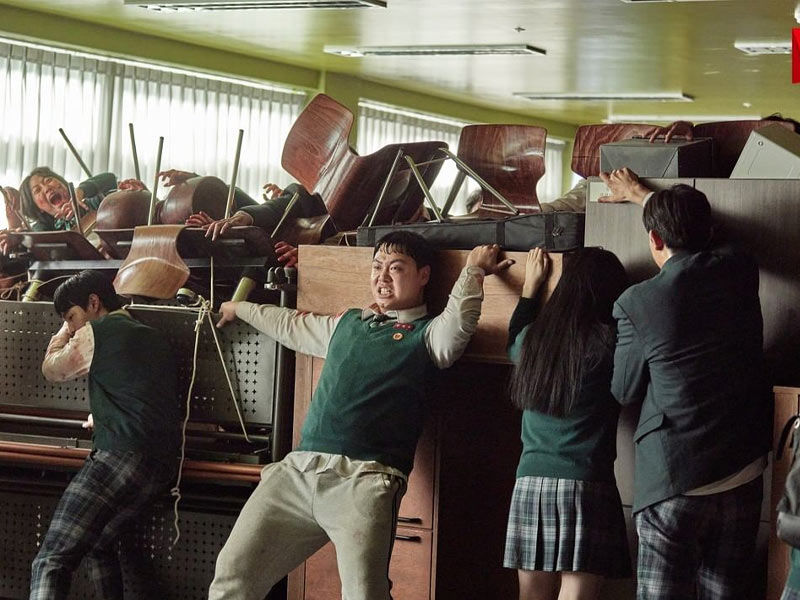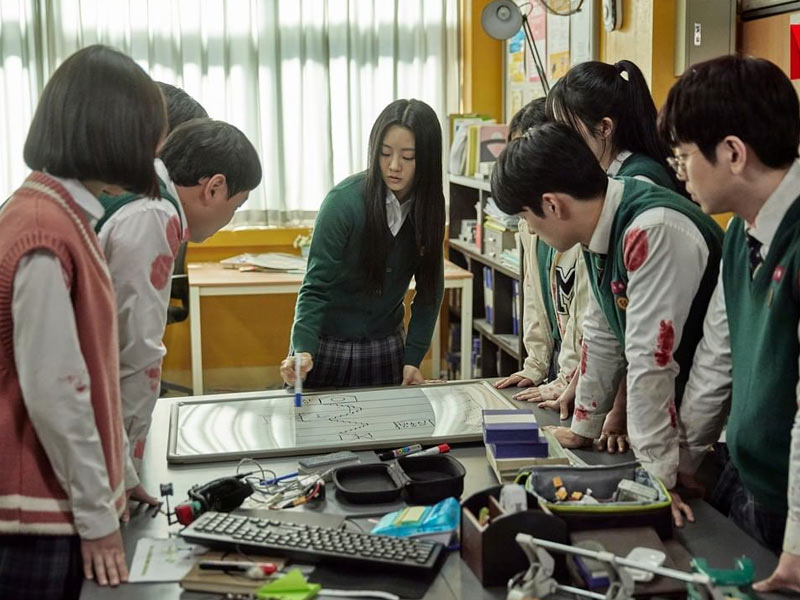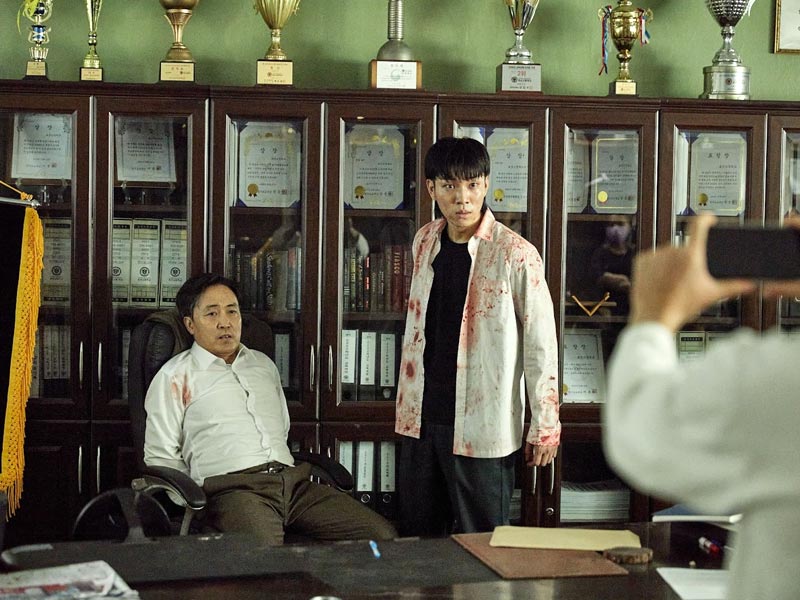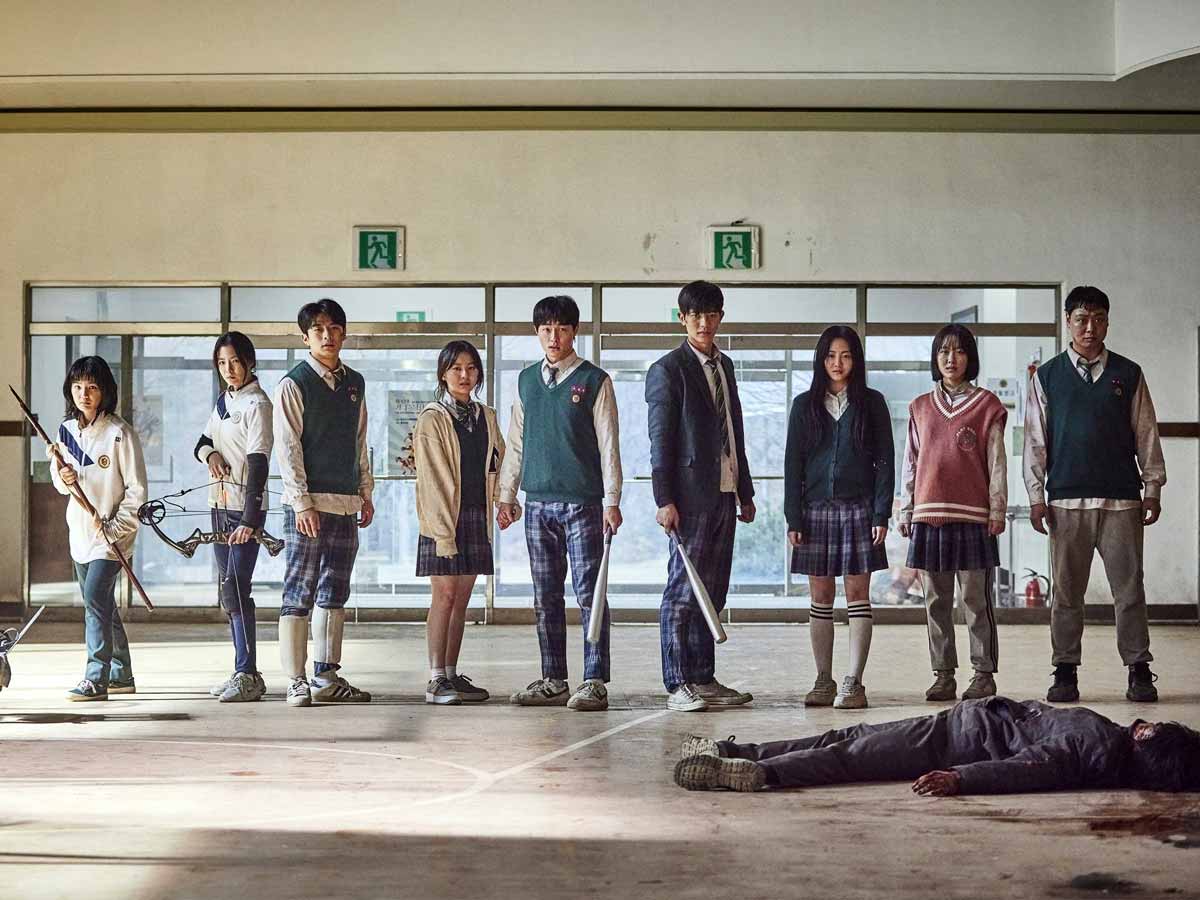There are few on-screen scenarios more terrifying than witnessing a zombie epidemic unfold in real time. Tracking a single illness as it spreads enormously and wreaks havoc on an unsuspecting population is an anxiety-inducing process that is rarely comfortable to see. “All of Us Are Dead,” the newest Netflix drama to tackle a widespread apocalyptic catastrophe, makes its presence known in the first episode by methodically depicting the change of a school. The vast Hyosan High School campus is thrown into pandemonium in a single day after an inadvertent bite from a science lab test animal sets off an irreversible chain reaction.

The scale of the zombie population increase is the principal accomplishment of “All of Us Are Dead.” Director Lee JQ does an excellent job of establishing the school’s topography, swooping through halls and around rooms on various floors. The sheer number of kids in any one rehearsal room, cafeteria, or lobby — all succumbing to a mind-numbing virus in seconds — makes the series’ first scenes as horrifying as any potential viewer’s expectations.
However, as the Hyosan population is whittled down in record speed, the phrase “expectations” hangs over most of the remaining 12-episode season. Despite the intricate setup and execution of a crumbling civilization, “All of Us Are Dead” takes up where it left off and follows a fairly well-worn zombie narrative template. It’s presented in an awkwardly paced season that battles against an intuitive framework as much as these pupils fend off chomps from swarms of youngsters in uniforms.
The composition of the tiny squad combating the undead changes throughout the series, but it is centered on childhood friends Cheong-san (Yoon Chan-young) and On-jo (Park Ji-hoo). They’re in high school, so a swarm of mutants ripping at their skin is just marginally more on their minds than the crushes they’ve been nursing on their fellow survivors. They go through the normal trial-and-error process of finding out how to create distractions, notify outside rescue forces, and assess the benefits of hunkering down vs. evacuating, barely holding their sentiments and prior social rankings at a distance.

Given that the zombies in “All of Us Are Dead” are the relentless, feed-at-all-costs species, the pupils are limited in their options.
“All of Us are Dead” has a wheel-spinning vibe to it, much like Dae-su (Im Jae-hyuk), Su-hyeok (Lomon), and Nam-ra (Cho Yi-hyun) are locked in a loop of dashing from room to room when their improvised walls fall way.
What starts as a real-time crisis tracker quickly devolves into a hodgepodge of conceptual hammer blows, redundant flashbacks, and talks that stay in old territory. Each time the series cuts to historical video of the virus’s architect reciting generic platitudes about human nature, it emphasizes the sense that the programme has few real ideas beyond executing a certain subgenre of tale in a specific way.
There is no finer illustration of “All of Us Are Dead’s” stagnation than Gwi-nam (Yoo In-soo), one of the most vexing bullies ever portrayed on film, and only partly by design. In a sea of zombies focused on their annihilation, no one character frustrates the survivors more than this cold-hearted foe driven entirely by vengeance. Gwi-nam is the story’s requisite “are humans the real monster?” in addition, but aside from showing the brutality of one high school villain writ large, “All of Us are Dead” treats him like so many other elements of this story: a way to add more manufactured drama to what is already a life-or-death situation.

It suggests that, even after creating this massive, high school-sized canvas to deal with, “All of Us Are Dead” is only employing a handful of the storytelling tools at its disposal. In a series of complex escape plots, the survivors hop from room to room. However, the inventiveness of these haphazard life-saving discoveries is never fully mirrored in the students themselves.
Also Read, The Journalist: A Fiction or Reflection of Today’s Scenario
“All of Us Are Dead” doesn’t have nearly as much to say about these kids, despite the lengthy time the show spends with them, since it saddles them with basic, unrequited affections and little, surface-level disparities. Torn between showing them attempting to find out how these zombies work, how to take care of everyday requirements, and how to cope with possible hazards inside their own group, most of this episode serves just to shuffle this group between narrative checkpoints.
It would be one thing if “All of Us Are Dead” was attempting to capture the boredom of surviving a swarm of zombie former classmates lurking in and around every corner. When the focus of the presentation switches away from that primary group, it always appears to be a more efficient use of time. A breakaway group of Hyosan survivors, primarily made up of the archery team’s surviving members (Check “bow-and-arrow weaponry” off the zombie fiction checklist!) with a more unique range of personalities and objectives.

In a few minutes, one cold open reveals more about a single soldier than we learn about the majority of the Hyosan crew. By the time the film zooms out to larger administrative forces beyond the principal and English teacher, there’s almost an implicit admission that the pupils would never be enough to support a whole show on their own.
There are hints of a leaner, more confident presentation peeking through. At one point, the Hyosan students record goodbye messages for their families, a reminder that the children whose parents do not have their own unique narratives have something to live for as well.
There isn’t much place for anything other than melancholy here, yet the occasional light-hearted distraction and chatter makes for anything other than the living nightmare unfolding just outside the walls of each inhabited room. When these times occur, they are appreciated. There aren’t quite enough to break a known story’s repetitive loop in a production with nearly a 12-hour running period.





























